#Nagoya City Science Museum
Video
20231229 Osu-Shirakawa-Sakae 6 by Bong Grit
Via Flickr:
白川公園の名古屋市科学館。この球体の中にプラネタリウムがあります。チタンぽく見えますが、ステンレスの外装のようです。 @Shiwrakawa area, Naka ward, Nagoya city, Aichi pref., Japan.(愛知県名古屋市中区 白川公園)
#Sphere#Planetarium#Wall#Green wall#Silver sphere#Stainless#Nagoya City Science Museum#Museum#Science museum#Park#Shirakawa park#Street#Candid#Snap#Shirakawa#Shirakawa area#Naka ward#Nagoya#Aichi#Japan#Nikon#Nikon Df#AF-S NIKKOR 24-85mm f/3.5-4.5G ED VR#flickr
2 notes
·
View notes
Note
Therizinosaur O-O
More Therizinosaurus coming up!

[ photo source ]
#ask#feralperson#Therizinosaurus#MPC-D 100/15#Fossil#Nagoya City Science Museum#Dinosaur#Theropod#Prehistoric#Cretaceous#Mesozoic#Photo
40 notes
·
View notes
Photo
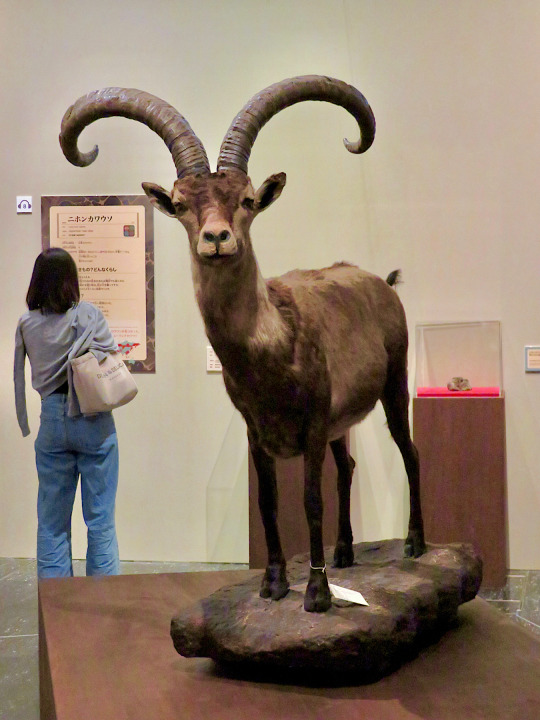

A male Pyrenean ibex mount, part of the Extinct Animal Laboratory exhibition at the Nagoya City Science Museum, Nagoya, Japan (2019). [ x ]
162 notes
·
View notes
Text

KOKIA in flashback - 2003
It is KOKIA's 5th anniversary in 2003, and she gets busy this year! She releases the singles Kawaranai koto ~since 1976~ ('things that won't change'), with the year referring to her own year of birth, and The Power of Smile/Remember the kiss. The latter remains one of her best-selling singles ever, and both single A-sides are used for commercials and TV programs, boosting their fame. Kawaranai koto ~since 1976~ features in the Fuji TV drama series Itoshiki no mono e ('to those I love') as its theme song, and The Power of Smile makes a splash on the music TV show Music Station. These land her many performances that year.
The title tracks of the singles end up on KOKIA's third album, Remember me, which releases late 2003 and breaks into the Oricon charts top 20. She tours to promote the album with her first concert tour, Remember me ~watashi wa koko ni iru yo~ ('I am here').
◆ Lives and events ◆
April 26
KOKIA Live Kawaranai koto ('things that won't change') (SHIBUYA BOXX)
May 18
In-store live to commemorate the release of Kawaranai koto ~since 1976~ ('things that won't change') (Tokyo, Laforet Harajuku)
May 31
NEW MAZDA DEMIO Luci & Caz CoolStyle in Maru building (Tokyo, Marunouchi building, 1F MARUCUBE)
※live recording opening TOKYO FM
June 1
NEW MAZDA DEMIO Luci & Caz CoolStyle in Maru building (Tokyo, Marunouchi building, 1F MARUCUBE)
June 14
In-store live to commemorate the release of Kawaranai koto ~since 1976~ ('things that won't change') (Hyôgo, HMV Sannomiya)
June 14
In-store live to commemorate the release of Kawaranai koto ~since 1976~ ('things that won't change') (Osaka, Shinsaibashi Parco)
June 15
In-store live to commemorate the release of Kawaranai koto ~since 1976~ ('things that won't change') (Aichi, Aeon Higashiura shopping center)
June 15
In-store live to commemorate the release of Kawaranai koto ~since 1976~ ('things that won't change') (Aichi, Yamagiwa Soft Nadya Park)
June 19
AIR-G' clock tower acoustic live vol.43 KOKIA (Sapporo clock tower 2F hall)
※live recording for AIR-G'
June 21
In-store live to commemorate the release of Kawaranai koto ~since 1976~ ('things that won't change') (HMV Yokohama Kôhoku)
June 21
In-store live to commemorate the release of Kawaranai koto ~since 1976~ ('things that won't change') (HMV Ikebukuro Metropolitan Plaza)
June 22
In-store live to commemorate the release of Kawaranai koto ~since 1976~ ('things that won't change') (HMV Shibuya)
June 22
In-store live to commemorate the release of Kawaranai koto ~since 1976~ ('things that won't change') (Tower Records Shinjuku store)
June 29
Atto! monthly live (Queen's Square Yokohama 1F Queen's Circle)
June 30
Tokyo Shimbun charity concert for child victims of the Iraq War (Roppongi Velfarre)
July 13
Oasis 21 Tanabata star festival (Aichi, Oasis 21)
July 19
Car life navi @ summer selection in super Autobacs TOKYO BAY Shinonome (Tokyo, super★AUTOBACS TOKYO BAY Shinonome)
August 10
Sanctuary (Shibuya CLUB QUATTRO)
August 11
Music week Ongaku no sohara in Kurumayama kogen (Nagano, Kurumayama plateau)
※ FM Nagano RemixSight live performance
August 23
24 hour TV charity live 2003 (Aichi, Nissan Nagoya Gallery) (special stage at Sakae, Hisaya-odori Park) (Laguna Gamagôri)
※ 3 performances in 1 day, different locations
August 24
ZIP-FM 10th Anniversary presents TREASURE MAP 052~DIAMOND WEEK~《FINAL》(Aichi, Club Diamond Hall)
August 30
Kobe collection 2003 A/W ~Kobe Fashion City announcement 30th anniversary~ (Kobe Fashion mart, 1F Atrium Plaza)
August 31
au EZ Chaku-uta ('truetone') LIVE STATION (Aichi, Hoshigaoka Terrace)
September 8
Your Side ~motto soba ni~ ('even closer') (Shibuya CLUB QUATTRO)
September 12
Gyokkodo/PALS21 G-LIVE5-Autumn Voice- (Hokkaido, KRAPS HALL)
September 30
KOKIA vs grass hockey (Aichi, ell. FITS ALL)
October 1
Takashi Tachibana and Mamoru Môri talk event Uchuu, kore kara ('space and beyond') (Tokyo, National Museum of Emerging Science and Innovation, 1st floor, Symbol Zone)
October 13
fm fukuoka presents KOKIA first live in GAYA (Fukuoka, fm fukuoka GAYA)
November 16
In-store live to commemorate the release of the album Remember me (HMV Yokohama)
November 24
Zaza City Hamamatsu 3th anniversary 'birthday festival' free live (Zaza City Hamamatsu)
【KOKIA 2003 concert tour Remember me ~Watashi wa koko ni iru to~ ('I am here')】
December 1 - Aichi, Imaike Gas Hall
December 2 - Osaka, Nanba Hatch
December 3 - Fukuoka, NTT Tenjin Hall
December 7 - Tokyo, Tokyo International Forum Hall C
December 11
CAMPARI RED PASSION in Omotesando ~opening ceremony~ (Aoyama Diamond Hall Patio)
December 20
FM Yokohama live broadcast, Queen's Square Yokohama presents AIR CRUISE Christmas Special (Queen's Square Yokohama 1F Queen's Circle)
December 23
ZIP-FM HOLIDAY SPECIAL DREAM Xmas for ZIPPIE (Aichi, Nadya Park 2F Atrium)
December 24
KISS ME ODAIBA ~hoshi ni negai o. koi ga kanau machi☆Odaiba~ ('Wishing on a star. The city where love comes true☆Odaiba~') (Fuji TV company office building, pond square)
◆ Releases ◆
May 21
Release of the single Kawaranai koto ~since 1976~ ('Things that won't change') (Victor Entertainment)
※ Used as theme song for the Fuji TV drama Itoshiki mono e ('to those I love').
The B-side song tell tell bouzu (spell for good weather) is used as the second end theme for the animated series Hungry heart -WILD STRIKER-.
September 24
Release of the single The Power of Smile / Remember the kiss (Victor Entertainment)
※ Used in a commercial for KAO Essential Damage Care.
November 12
Release of original album Remember me (Victor Entertainment)
◆ Other releases ◆
January 22
Release of the FAKE? album TOMORROW TODAY (Warner Music)
※ Part of the chorus of the song CARE.
March 19
Release of J.LEAGUE ANTHEM 'THE GLORY' (Sony Music Entertainment)
※ Part of the chorus of the song THE GLORY (Triumph Mix).
◆ Other ◆
June
Performed the song Natsu no tobira ('Door to summer') (original by Seiko Matsuda) for the Kirin green tea TV commercial (wisteria version).
December 2003 - January 2004
Recording of the KOKIA song Yuukyuu no mori ('forest of eternity') for NHK's Minna no uta ('songs for everyone').
4 notes
·
View notes
Video
vimeo
Over the course of the COVID lockdowns - desperate for the outside world beyond my doorstep, city, state and country - I started crafting a project using entirely Google Maps Streetview Images. I viewed and downloaded the world from my desk, finding amazing spaces, altering, hand tracking and creating timelapses and shots. I wasn’t quite sure what to make of the material. Until I heard the latest album from Axel Boman. Here was a song from one of my favorite artists with such a propulsive and idealistic reaching out towards the wider world. Letting the wind take us, with love as the sail, a blur of adventure across the planet. Special thanks to Axel, Kornel and Studio Barnhus for the trust, a random plugin that let me download raw 360 images and Google for bringing the world to our screens. Locations used: Australia - Melbourne Cricket Stadium Austria - Kunsthistorisches Museum Brazil - Marcana Stadium - Municipal Theater of Rio de Janeiro - Museu Nacional de Belas Artes - Rio de Janeiro Metro - Sao Paulo Biennale Canadian - Arctic Regions Czech Republic - Charles Bridge Denmark - Christiansborg Palace - Thorvaldesens Museum Faroe Islands - Slættaratindur France - Arc de Triomphe - Château de Chenonceau - Grand Palais - Mont Blanc - Mont Saint-Michel - Museum of Fine Art Lyon - Palace of Versailles - Paris City Hall - University of Lyon Germany - Alte Pinakothek - Altes Museum - Hamburg Canals - Miniatur Wunderland - Sanssouci Palace - Staatliches Museum Schwerin Greece - Acropolis Museum Greenland - Arctic Regions India - Himalayan Railway - Taj Mahal Italy - Florence Train Station - Grassi Palace - Municipal Library Teresian - National Gallery of Modern and Contemporary Art - The Floating Piers - Uffizi Gallery Japan - Bullet Train - Chiba Monorail - Fushimi Inari Taisha - Miraikan - Nagoya Station - Ryogoku Kokugikan - Suzuki Circuit Mexico - Archivo General de la Nación Mongolia - Khuvsgul Lake Nepal - Various trails New Zealand - Coronet Peak Norway - Fv36 - Fv64 Portugal -Coastal Railway - Mafra National Palace Russia - Bolshow Theater - Crocus City Hall - St Petersburg State University Scotland - National Museum of Scotland Singapore - Singapore Sports Hub South Korea - National Museum of Korea Spain - Bilbao Stadium - Catedral de la Almudena - Guggenheim Bilbao - La Sagrada Familia - Museo de Bellas Artes de Granada - University of Madrid Sweden - Avicii Arena - Gamla stan - Skokloster Castle Switzerland - CERN - Charles Kuonen Suspension Bridge - Swiss Alps Taiwan - Fo Guang Shan Buddha Museum United Arab Emirates - Burj Al Arab United States - Chicago River - Crystal Bridges Museum - Denali - Dry Tortugas - Guggenheim - John F. Kennedy Center for the Performing Arts - Neues Museum - Seven Mile Bridge - Shedd Aquarium - Smithsonian Science Center - The Grand Canyon - The Intrepid - University of Michigan
0 notes
Photo
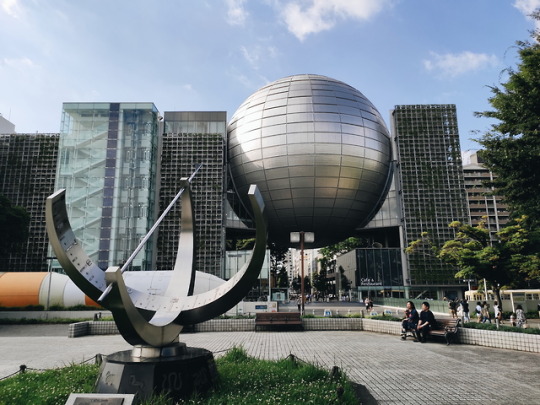

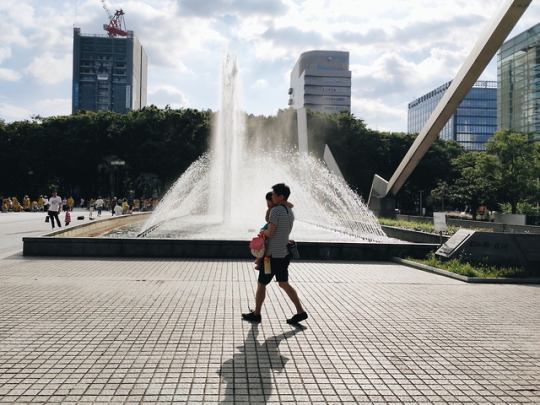
Shirakawa Park and Nagoya City Science Museum
15 notes
·
View notes
Photo
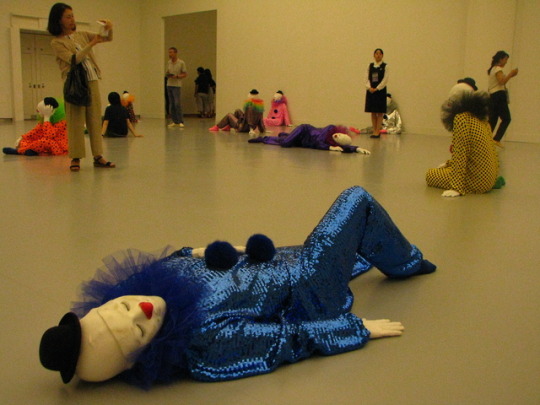

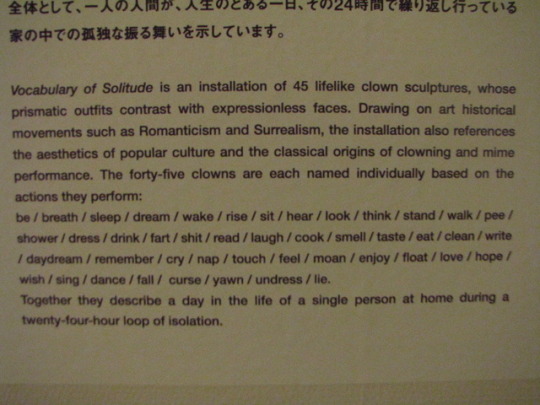





Aichi Triennale 2019 - Taming Y/Our Passion
The Aichi Triennale is Japan’s largest international art fair.
I visited two of the main venues (Aichi Arts Center and Nagoya City Museum of Art) and was impressed by the quality of the works on display. Every single piece dealt with a theme that is important in today’s life. The blurring of ethnic boundaries, the rewriting of history, the effect of technology and science on our lives, and social isolation are just some of the themes apparent in the works. To me, art should not just be a beautiful thing to look at (although that also has a place, and I am a big fan of many of those kinds of artworks myself) but should hold up a mirror to our society and world. All the works I saw at this exhibition did that very well.
The first photos are of “Vocabulary of Solitude” by Ugo Rondione. Yes, it’s a room full of clowns wearing masks and garish costumes. For a moment, when I first entered the room, I thought they were real people (they are life-sized) and was a little afraid to enter. (I soon realized that they’re statues and walked among them). The theme of this work is solitude; perhaps social isolation.
The last photos are of a work called “The Clothesline” by Monica Mayer. This work has been re-created many times since 1978. Participants are asked to write the answers to 4 questions on a card. It is then hung on a line for all to read. This project aims to raise awareness about sexual violence.
The last photo is of two letters. One is by an artist who claims her work, called “After Freedom of Expression?” was removed from the exhibition as an act of censorship, and the other is a rebuttal from the Aichi Triennale Organizing Committee, who claims that the work was removed “to ensure a safe and secure setting for visitors to enjoy the Triennale.” The fact is that there has been a LOT of controversy over the exhibition this year. In particular, “After Freedom of Expression?” deals with the issue of South Korean “comfort women” (basically women forced to become sex slaves to the Japanese army before and during WWII). The mayor of Nagoya himself demanded it be removed. I think that fits the definition of censorship.
You can read more about it here: http://www.artnews.com/2019/08/13/aichi-triennale-2019-work-removal/
and here: https://mainichi.jp/english/articles/20190803/p2a/00m/0na/005000c
#aichi#aichiprefecture#aichi prefecture#aichi triennale#aichitriennale#aichitriennale2019#aichi triennale 2019#controversy#censorship#art#artexhibition#internationalartexhibition#japaneseart#nagoya#nagoyajapan#controversialart#creepyclown#clothesline#pinkclothes#southkorea#south korea
2 notes
·
View notes
Text
22 Destinasi Liburan Ke Nagoya Jepang Yang Harus Kalian Kunjungi
22 Destinasi Liburan Ke Nagoya Jepang Yang Harus Kalian Kunjungi
Berita Travel Jepang – Terletak di antara Tokyo dan Osaka, Nagoya mempunyai berbagai macam budaya yang unik termasuk juga makanannya, sebagai salah satu kota besar Jepang dan pusat Industri, area ini menawarkan banyak hal untuk dilakukan dalam liburan ke Jepang, di artikel ini Artforia akan memberikan dimana saja tempat-tempat yang wajib anda kunjungi dan minati saat liburan ke Nagoya, Jepang.
Yu…
View On WordPress
#Arimatsu Townscape#Atsuta-Jingu Shrine#Berita Travel Jepang#Higashiyama Zoo#Inuyama-jo Castle#izakaya#JR Central Towers#Liburan Ke Nagoya#Meijimura#Midland Square Sky Promnade#Nagoya#Nagoya Castle#Nagoya City Science Museum#Oasis 21#Osu Kannon & Osu Shopping District#Port of Nagoya Public Aquarium#SCMAGLEV and Railway Park#Shirotori Garden#Tebasaki#Tokoname Pottery#Tokugawa Art Museum#Tokugawaen Garden#Toyota Automobile Museum#TOYOTA Commemorative Museum of Industry and Technology#travel jepang#Urakuen
0 notes
Photo

Photo source [x]
Nagoya City Science Museum, Planetarium [x]
I will visit you again one day. (and I’ll never forget that I got stood up on our first date -low key still upset about that-)
0 notes
Video
Mitsubishi T2-CCV ‘29-5103 / 103’ by Alan Wilson
Via Flickr:
c/n 003 Built 1972 as the third prototype T-2. Later converted into the CCV (Control-Configured Vehicle) and used for computer controlled research. It was finally used for test-pilot training until retired in 2002. Kakamigahara Aerospace Science Museum Kakamigahara City, Gifu Prefecture, Japan 15th March 2019 The following info on the T2-CCV is from the fascinating j-hangarspace.jp website:- “First delivered on July 6, 1972, the third prototype T-2 trainer was naturally initially assigned to the type’s test programme from Gifu AB and then, from April 6, 1982, to the JASDF Air Proving Wing (APW). Converted to investigate flight stability achieved by computer control, the data from which would later be utilized in the development of the Mitsubishi F-2, the single-seat T-2 CCV was first flown from Nagoya on August 9, 1983, and again, this time with a fly-by-wire system installed and its distinctive canard wings fitted, on February 16, 1984. At the end of the two-year joint TRDI*-APW programme, during which 137 flights were completed, the aircraft was utilized for additional research and test pilot training at Gifu, where it remained in store for airing on base open days following its withdrawal from use on October 31, 2002. Reportedly a target for the museum from the start, arranging the loan of an aircraft that is certified for preservation by the JASDF took time and patience on the part of the Kakagamihara City authorities, but those efforts were eventually rewarded. (*) The Technical Research and Development Institute of the then Japan Defense Agency, now the Acquisition, Technology and Logistics Agency under the Ministry of Defense”
3 notes
·
View notes
Text
Kisho Kurokawa Buildings, Japanese Metabolist
Kisho Kurokawa Buildings, Architect, Japanese Tower, Tokyo Buildings, Design Projects
Kisho Kurokawa Architecture Studio
Kisho Kurokawa – Japanese Metabolist Architecture Information + Images
post updated 22 April 2022
Nakagin Capsule Tower Demolition
Nakagin Capsule Tower in Tokyo by Kisho Kurokawa
One of Japan’s most distinctive works of contemporary architecture, the Nakagin Capsule Tower in Tokyo, will be demolished this April, according to the building’s new owners. The building’s architect was Kisho Kurokawa.
The decision ends years of uncertainty surrounding the Metabolist structure, which had fallen into disrepair.
Nakagin Capsule Tower in Tokyo:
photograph : Kakidai, CC BY-SA 4.0 https://ift.tt/e61nCjv, via Wikimedia Commons
Completed in 1972, the tower comprises 144 factory-built units arranged around two concrete cores. Each 10-sqm (108-sqft) “capsule” features a porthole-style window, with appliances and furniture built into the structure of each home.
Nakagin Capsule Tower building:
photograph : scarletgreen, CC BY 2.0 https://ift.tt/MriComZ, via Wikimedia Commons
The building is a good example of Metabolism, a radical architectural movement that emerged from the ruins of World War II. As well as embracing technology and mass production, the avant-garde group’s members looked to nature for inspiration, with structural components treated like organic cells that could be “plugged” into a larger whole or later replaced. There is a strong theoretical relationship with Archigram, an architectural group that emerged in the UK:
Archigram – Peter Cook, Archigram. Plug-In City, Max Pressure Area, section, 1964:
M+, Hong Kong. © ARCHIGRAM ARCHIVES
The building’s designer, Japanese architect Kisho Kurokawa, had originally envisaged the Tokyo tower’s capsules being replaced every 25 years. But they instead grew dilapidated and outdated, with many of the apartments now sitting empty, used for storage and office space, or rented out to architecture enthusiasts on a short-term basis.
Nakagin Capsule Tower in Ginza, Tokyo, Japan:
photograph : Kakidai, CC BY-SA 4.0 https://ift.tt/e61nCjv, via Wikimedia Commons
In 2007, the owners’ association voted to sell the tower to a property developer that intended to demolish and replace it. But the firm filed for bankruptcy during the 2008 recession, and the site’s fate was thrown into years-long limbo.
photograph : Kakidai, CC BY-SA 4.0 https://ift.tt/e61nCjv, via Wikimedia Commons
Kisho Kurokawa – Key Projects
Kisho Kurokawa – Buildings, chronological:
Nakagin Capsule Tower, Ginza, Tokyo, Japan
Dates built: 1970-72
The Nakagin Capsule Tower is a mixed-use residential and office tower designed by architect Kisho Kurokawa and located in Shimbashi, Tokyo, Japan. Completed in just 30 days in 1972, the building is a rare remaining example of Japanese Metabolism, an architectural movement emblematic of Japan’s postwar cultural resurgence.
Sony Tower, Osaka, Japan
Dates built: 1972-76
Tateshina Planetarium, Hiroshima, Japan
Date built: 1976
Japanese Red Cross Society – Headquarters, Tokyo
Dates built: 1975-77
National Museum of Ethnology, Osaka, Japan
Dates built: 1973-77
Saitama Prefectural Museum of Modern Art, Saitama, Japan
Dates built: 1978-82
National Bunraku Theater, Osaka
Dates built: 1979-83
Wacoal Kojimachi Building, Tokyo
Dates built: 1982-84
Nagoya City Art Museum, Nagoya, Japan
Dates built: 1983-87
Japanese-German Center of Berlin, Berlin, Germany
Dates built: 1985-88
Osaka Prefectural Government Offices, Osaka
1988
Hiroshima City Museum of Contemporary Art, Hiroshima
1988-89
Chinese-Japanese Youth Center, Beijing, China
1987-90
Okinawa Prefectural Government Headquarters, Okinawa, Japan
1988-90
The Sporting Club at Illinois Center, Chicago, USA
1987-90
Melbourne Central, Melbourne, Australia
1986-91
Nara City Museum of Photography, Nara, Japan
1989-91
Louvain-La-Neuve Museum, Belgium
1990-92
Pacific Tower, Paris, France
1988-92
Ehime Museum of Science, Ehime, Japan
1991-94
Ishibashi Junior High School, Tochigi, Japan
1992-94
The Museum of Modern Art Wakayama, Wakayama, Japan
1990-94
Hotel Kyocera, Kagoshima, Japan
1991-95
Kibi-cho City Hall / Kibi Dome, Wakayama, Japan
1993-95
Fukui City Museum of Art, Fukui, Japan
1993-96
Fujinomiya Golf Club, Fujinomiya, Shizuoka, Japan
1994-97
Kashima-machi City Hall, Kumamoto, Japan
1995-97
Shiga Kogen Roman Art Museum, Yamanouchi, Japan
1994-97
Kuala Lumpur International Airport, Kuala Lumpur, Malaysia
1992-98
Van Gogh Museum – New Wing, Amsterdam, Netherlands
1990-98
Fukui Prefectural Dinosaur Museum, Katsuyama, Japan
1996-2000
Osaka International Convention Centre, Osaka
1994-2000
Oita Stadium, Oita, Japan
1996-2001
Toyota City Stadium, Toyota City, Japan
1997-2001
Astana International Airport, Astana, Kazakhstan
2000-03
National Gallery in Tokyo, Roppongi, Tokyo
2000-05
Singapore Flyer – observation wheel, Marina Bay, Singapore
2005-08
Kisho Kurokawa Architect & Associates with DP Architects
Astana – Masterplan, Kazakhstan
1998-2004
Kisho Kurokawa: design competition win
Zenit Stadium, St.Petersburg, Russia
2006-09
Maggie’s Centre Swansea, Wales, UK
2007-
St Petersburg football stadium, Russia
2007-
More architectural projects by Kisho Kurokawa online soon
Location: 9-5-14 Akasaka, Minato-ku, Tokyo, Japan, eastern Asia
Kisho Kurokawa Further Information
Japanese architect – one of Metabolist Movement founders in 1960
Office of Kisho Kurokawa Architect & Associates established in 1962, Tokyo, Japan.
Born: 8 April 1934, in Kanie, Aichi, Japan
Died: 12 October 2007, aged 73, in Tokyo, Japan
Kisho Kurokawa studied architecture at Kyoto University, graduating with a bachelor’s degree in 1957. He then attended University of Tokyo, under the supervision of Kenzo Tange. Kurokawa received a master’s degree in 1959.
Kurokawa then went on to study for a doctorate of philosophy, but dropped out in 1964. He was conferred an Honorary Doctorate of Architecture by the Chancellor of Universiti Putra Malaysia (UPM), Malaysia on 7 September 2002.
With colleagues, he co-founded the Metabolist Movement in 1960. Members were known as Metabolists.
It was a radical Japanese avant-garde movement pursuing the merging and recycling of architecture styles within an Asian context. The movement was very successful, peaking when its members received praise for the Takara Cotillion Beautillion at the Osaka World Expo 1970. The group was dismantled shortly thereafter.
Japanese Architect
Tokyo Architecture
Tokyo Architecture Designs – chronological list
Tokyo Architecture News
Tokyo Architecture Designs – architectural selection below:
Kasho Gyoen Hotel Accommodation, Minami-ku, Sapporo, Hokkaido, northern Japan
Architects: Hiramoto Design Studio
photography: Koji Fujii / Nacása&Partners Inc
Kasho Gyoen Hotel in Hokkaido
The Clearwater Building, Niseko, Hokkaido, Northern Japan
Design: Seshimo Architects + Peter Hahn Associates
photography : Junji Kojima / 45gPhotography, Aaron Jamieson
The Clearwater Building in Hokkaido
Tokyo Architect
Tokyo Houses
Tokyo Building Designs
Tokyo Architects Studio
Japanese Architecture
Japanese Architect Office
Japanese Architecture
Buildings / photos for the Kisho Kurokawa Buildings page welcome
The post Kisho Kurokawa Buildings, Japanese Metabolist appeared first on e-architect.
0 notes
Note
Aren't those Deinocheirus’ Arms?
Assuming this is about the photo featured here, nope! Those are the arms of Therizinosaurus MPC-D 100/15, on display at the Nagoya City Science Museum. They certainly are similar, though! To help distinguish between the two, watch out for the size of the claws.
Therizinosaurus has enormous claws, measuring around a metre long, whereas Deinocheirus has much shorter ones in comparison.

[ photo source ]
Here's a set of Deinocheirus forelimbs for ya, though!
#ask#anonymous#Deinocheirus#MPC-D 100/18#Fossil#Dinosaur#Theropod#Cretaceous#CosmoCaixa Barcelona#Photo#Museum#Prehistoric
36 notes
·
View notes
Photo

娘と名古屋市科学館に昆活しに来た (Nagoya City Science Museum) https://www.instagram.com/p/CTqeJdsP7bv/?utm_medium=tumblr
0 notes
Photo
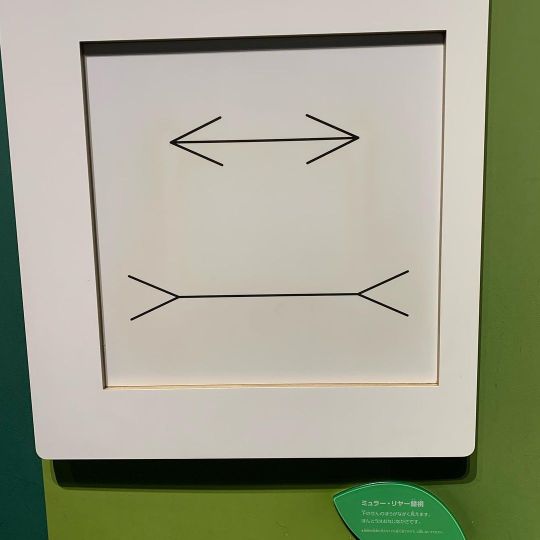
測ったら下の線の方が長かった (Nagoya City Science Museum) https://www.instagram.com/p/CSBPXItL-as/?utm_medium=tumblr
0 notes
Photo

Ep. 04 NAGOYA นาโกย่าเป็นเมืองที่เรามาบ่อย แต่ไม่ค่อยได้ออกไปเที่ยวที่ใหม่ๆ เพราะก็จะชินกับร้านอาหารหรือแหล่งชอปปิ้งที่เราไปเป็นประจำ มานาโกย่า 3 ขีดรอบนี้เลยลองไปเที่ยวที่ใหม่ๆดูบ้าง เป็นสถานที่ๆอยากไปมานานแล้ว และถ้าปกติชวนใครมาก็คงหาคนมาด้วยยาก เหตุเพราะมันคือ Nagoya City Science Museum ซึ่งฟังดูแล้วน่าจะเหมาะสำหรับเด็กๆมากกว่า และมันก็จริงแหละ มันคือ Museum สำหรับเด็ก (แต่เพราะเรายังเด็กอยู่ มันจึงเหมาะกับเรา คริคริ) ของเล่นในฐานต่างๆ ทำดีมาก สนุก น่าตื่นเต้นทุกอัน สมศักดิ์ศรีกับที่เป็นประเทศสุดยอดเทคโนโลยีและวิทยาศาสตร์อย่างญี่ปุ่นมากๆ ความเป็นระเบียบเรียบร้อย สะอาดสะอ้าน คือจุดขายของเค้าอยู่แล้ว Highlight เด็ดที่พลาดไม่ได้เลยคือ Planetarium หรือท้องฟ้าจำลองของที่นี่ มีโชว์ความยาว 45 นาที ที่คุ้มค่ามากๆ เสียดายที่มีบรรยายเป็นภาษาญี่ปุ่นอย่างเดียว แต่ภาพและเสียงก็ตื่นตาอลังการดาวล้านดวง (literally ล้านดวงจริงๆ 555) ใครมีลูกมีหลาน หรือ young at heart แนะนำเลยจ้า รับรองไม่ผิดหวัง @s_metha #Nagoya #Japan #NagoyaCityScienceMuseum #Planetarium #MethaVarakornOnTour #MethaVaraTour (at 名古屋市科学館プラネタリウム)
1 note
·
View note
Photo
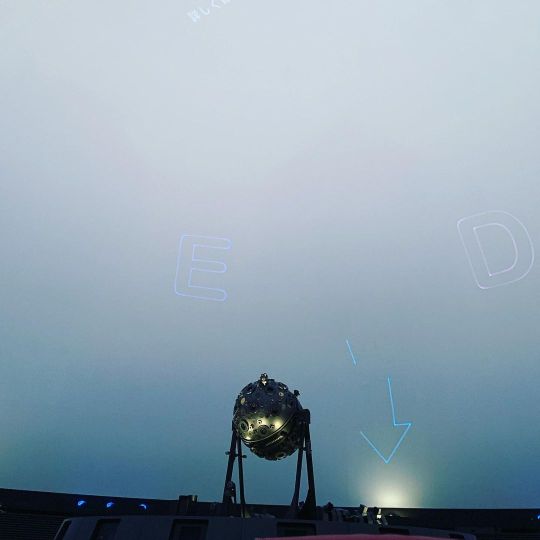
プラネタリウム #ブラザーアースプラネタリウム #名古屋 #nagoya #musium (Nagoya City Science Museum) https://www.instagram.com/p/CJAuOcCjTpg/?igshid=b2m499rdvem8
0 notes
